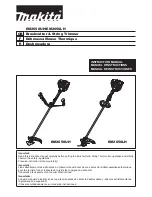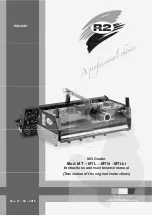
Section 3 - Finishing Your Guitar
Quilt Top Section 3 - 2 -
7.
Buff finish
3.1.3
Penetrating Stain or water based dye finish:
1.
Sand the body and neck to bare wood
2.
Apply grain filler if desired.
3.
Apply stain or dye
4.
Apply 2 coats of sand and sealer
5.
Sand to 320 grit
6.
Apply clear top coats
7.
Buff finish
3.2
Explanation of Sequence Steps:
3.2.1
Sanding the Body and Neck
1.
Wear a NIOSH-approved respirator and ANSI-approved safety glasses when sanding wood!
2.
Before starting the finish on the neck mask off the surface of the fingerboard.
3.
Use a flexible sanding block with #150 grit aluminum-oxide sanding paper to sand the guitar
body until there is a consistent scratch pattern on the entire surface. Note: DO NOT round over
the neck pocket or the body cavities. When hand sanding, always sand in the same direction as
the wood grain.
4.
Re-sand the entire guitar body and neck with #220 grit sanding paper and lightly round over the
outside edges of the body.
5.
Wipe the guitar body and neck with a damp cloth to “raise" the wood grain.
6.
Wait until the wood is dry and re-sand with #220 grit sandpaper to
sand the “raised" grain
smooth.
(Note: On a maple fingerboard you can apply a clear finish to the entire neck and fingerboard. Apply
several coats and remove buildup on the frets between coats. An easy way to remove the finish buildup
on the frets is to take a nail and file a half round slot in the head about the same size as the frets. You
can then use this to easily scrape any finish build up.
If the neck has a Rosewood or Ebony fingerboard, be sure to tape off the fingerboard before applying
the finis
h. Behlen’s Fingerboard Oil is a great product for your fingerboard.)
3.2.2
Appling Grain Filler
Grain filler will fill in the grain and create flat surface. This is essential if you are trying to get a high gloss
finish. Oil based grain filler is recommended. We recommend using Behlen PORE-O-PAC grain filler. For
most finishes use natural colored filler. The dyes used in darker fillers may over time find their way
through the color coat.
TIP…
re-open any of the screw holes in the body. Use a toothpick or small drill held between
your fingers to clean out any filler in the holes.













































